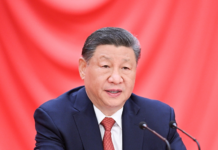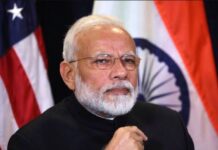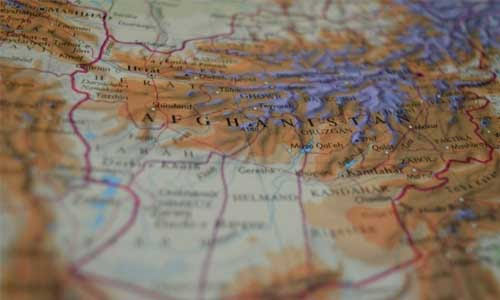It is a fact that the sea played a vibrant role throughout the history of mankind. The ocean, one of the God-gifted resources, has a great influence upon the economic and political activities of human beings. It has been a significant source for trade, commerce, transportation, movement of people, goods, and ideas from one part of the world to another. Likewise, maritime strategic choke points have also been used by major powers of the time to expand their territorial, military, economic, political, and ideological influence beyond their border. Whereas, for European imperial powers, strategic chokepoints and naval bases, ports, and trade routes, and sea lines of communications were major factors through which they imposed their military power upon colonies in Asia, Africa, and America.
Sea power has always been at the centre of geopolitical, geostrategic, and geoeconomic calculations of major powers. In the geopolitical structure of the world, states have always relied on maritime power for a full realization of their power potential, during peace or war. A nation strategically occupying a key maritime position with a long coastline, ports and chokepoints, can influence regional, evencum global, geopolitics.
The concept of Sea power, as a formal strategic concept, was first introduced by Alfred Thayer Mahan (1840-1914), an American naval strategist and a historian known as the Godfather of sea power and strategy. His works mainly focused on the history, power, and strategy of the sea as a determining factor in international politics. For him, command of the sea at the time of war and peace is the most prominent factor for national growth, prosperity, and greatness. He pointed out that, ‘control of the sea by maritime commerce and naval supremacy means predominant influence in the world… and is the chief among the merely material elements in the power and prosperity of nations.’ Simply put, sea power is about the sea-based capacity of a state to determine or influence events, currents, and developments both at sea and on land. It is not just for the economic activities and development, also considered a broad spectrum of a nation’s strategic culture. In the contemporary globalized world, states are more connected and any occurrence in the sea could directly influence political, economic, and strategic life on land.
Furthermore, Mahan also considered marine civilization as equal to commercial civilization and trade as the main policy tool, whereas military operations can only be used as a source to create a favorable environment for commercial activities. There are three key factors of this business cycle employed by a sea power to achieve its geoeconomics and geopolitical objectives. These consist of production, shipping, or navigation and colonies or commercial ports. First, that nation should have the capability of exchanging goods and services through sea routes. Second is that of shipping to implement exchanges to the destination. Finally, to become a sea power, a nation needs to build offshore colonies to regulate and protect commodity exchange throughout the world. Trade and commerce have been initially used as a colonial tool by major powers for geostrategic purposes. Great Britain used the East India Company as a colonial tool to further its colonies. It would not be wrong to say that utilizing soft power masks hard power.
Thus, it is challenging to measure the driving elements of a sea power because it is not based on a single and defined factor. But maritime strategic thinkers, Mahan in particular, put certain criteria for analyzing the position and geostrategic status of that state. These criteria are made up of the geographical position, of how much a state is open to the sea. The strategic configuration of the state is equally important because the prosperity of trade and security depends upon this. Likewise, the length of coastline and size of the population is also decisive. However, it is not the total size of the population but that portion which can build ships and engage in maritime trade activities. Finally, to employ these human and natural resources depends upon the political nature and character of the government, its willingness and maritime policies. to effectively materialize these factors as a source of national power.
In international politics, the sea has been considered as a dominant strategic paradigm for the rise and fall of nations. As Sir. Walter Raleigh, an English statesman, rightly put it into account, “he that commands the sea, commands the trade, and he that is lord of the trade of the world is lord of the wealth of the world, and he that owns wealth, controls the world itself.” So, the naval strategic thinkers believe that sea power should be at the centre of the geopolitical debate.
He further argued that Great Britain’s role as a vibrant sea power immensely contributed to its economic growth and military expansion throughout the world. Britain is much smaller than the USA and Russia, but it had strategic position and openness to maritime trade and transportation. Likewise, the Ryoal Navy immensely contributed to its expansion. That was so for the USA as a great power, thanks to its indispensable naval force. Those were their strategic capabilities through which they integrated their continental and maritime sources of power in their foreign and strategic policies.
However, the geopolitical history of sea power is not motionless, and it is floating from one part of the world to another. It has been traveling from the European continent to the American, and now in the 21st century the Asian. Look at the transformation of Chinese, Indian, and Southeast Asian nations from continental considerations to maritime trade, commerce, and transportation.
The economic and military rise of China and India is now featuring the rise of Asian maritime power in the 21st century. Their high economic growth, maritime trade and transportation, naval-industrial complex, industrial transformation, and building their naval military capacity in the world determined the rise of the Asian century. Southeast Asia is at the converging point of the dynamics of China and India. Both states are rising either economically or militarily mainly focusing on maritime activities. Geographically, both states own a long coastline and some of the key shipping ports of the world.
China under the Maritime Silk Road is expanding its economic and strategic sphere of influence throughout the Indo-Pacific region through constructing commercial ports and naval bases. India doesn’t let China rule the waves alone. India also expanded its economic and strategic wings in the Asia-Pacific region under its necklace of diamonds called Look East Policies.
The Chinese Maritime Silk Road and expansion of its blue-water navy in the Pacific and Indian Oceans is a clear indication towards becoming a maritime power. Since 2013 Chinese policymakers have shifted their focus towards maritime economic and strategic thinking.
China’s building of artificial islands in the South China Sea, strengthening its blue-water navy throughout the Indo-Pacific region and investing billions of dollars in littoral countries for commercial and strategic port construction is a clear Chinese message of its maritime thinking. Furthermore, China has become the world’s factory and has become the second fastest growing economy in the world.
In Shipping and transportation, Chinese state-owned shipping companies are its strategic assets. Its shipping company COSCO is ranked second largest container shipping company in the world and is functioning in over 50 countries.
Correspondingly, India has a great strategic concern to turn its brown-water navy into a blue-water one, owing to the world’s geostrategic transformation. Since its inception as a sovereign state, maritime thinking has been at the core of India’s foreign policy. Once Jawahar Lal Nehru said, “To be safe on land, we must be supreme at sea.” In the 21st century, India is modernizing its naval power. Blue Water Navy, defined as the capability of naval forces to function and perform their sea-based activities and protect their national interests beyond their own maritime territory. However, most of the naval strategists believe that it is the capability of extended and sustained operations across the open seas and has a capacity to project credible power in the distant seas.
India’s contemporary Sagarmala Programme (Garland of the Sea), a flagship project of the Ministry of Shipping to boost sea-based development in the country by exploiting India’s 7,500 km long coastline. The key initiatives under the Sagarmala Programme include port modernization, development of new ports, port connectivity enhancement, developing coastal zones, establishing connectivity between port and roads, and coastal community development as well. The geopolitics of sea power has clearly been transformed from West to East.























